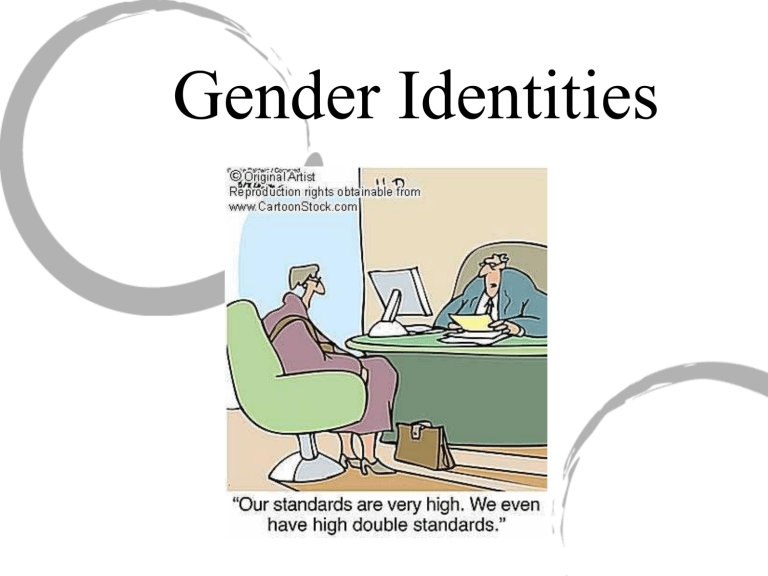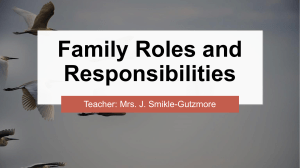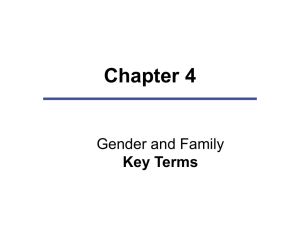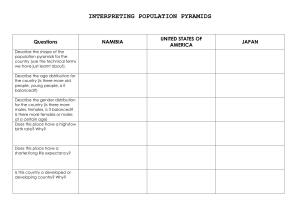
Gender Identities SEX Characteristics of males and females attributable to biology: Sex includes the different chromosomal, hormonal, and anatomical components of males and females that are present at birth (p. 80) Gender Culturally learned differences --in characteristics and behaviors-between women and men. Gender Roles Behavior patterns, obligations, and privileges that are considered appropriate for each sex Gender Identity The degree to which an individual views her- or himself as masculine or feminine based on society’s definition of appropriate gender roles Maccoby & Jacklin Identified areas of psychological functioning in which clear male/female differences could be established: • Females have greater verbal ability • Males have greater visual-spatial ability • Males perform better on math tests • Males are more aggressive Maccoby & Jacklin Sex Differences (based solely on biology) 1. Aggressiveness 2. Visual-Spatial Ability Role of Biological Factors NEED TO ASK FOUR QUESTIONS: Do Sex Differences… 1. occur early in development, before considerable learning has a chance to occur? 2. occur consistently across cultures? 3. Occur consistently across species, particularly species closely related to humans (other primates)? 4. Do physiological variables related to gender (sex hormones) have an effect on the behavior in questions? Theories of Gender Role Socialization 1. Social Learning Theory: Proposes gender roles are the result of direct and observational learning. 2. Social Identification Theory (cognitive-developmental theory): emphasis on what goes on inside a child’s head. Kohlberg: Self-socialization 3. Gender Schema Theory: (Bem) Children develop a culturally-based mental framework (i.e. schema) for processing information based on its perceived female/male qualities 4. Social Role Theory (Eagly): sex-based divisions of labor, which occur in almost all societies, leads necessarily to sex differences in behavior and to stereotypical perceptions that women and men are different. Huber’s Theory of Gender Stratification 1. Foraging and Hoe Societies 2. Agricultural Societies 3. Industrial Societies 4. Postindustrial Societies 5. Chodorow’s Theory of Gender (psychoanalytic model & object relation theory) the asymmetrical organization of parenting (with the mother as the primary caregiver) is the cause of significant contrasts between male and female gender identity acquisition processes. * Personal Identification * Positional Identification Androgyny Social and psychological condition in which individuals can possess positive qualities associated with both feminine and masculine gender roles. How Can Gender Be understood as a Class?





